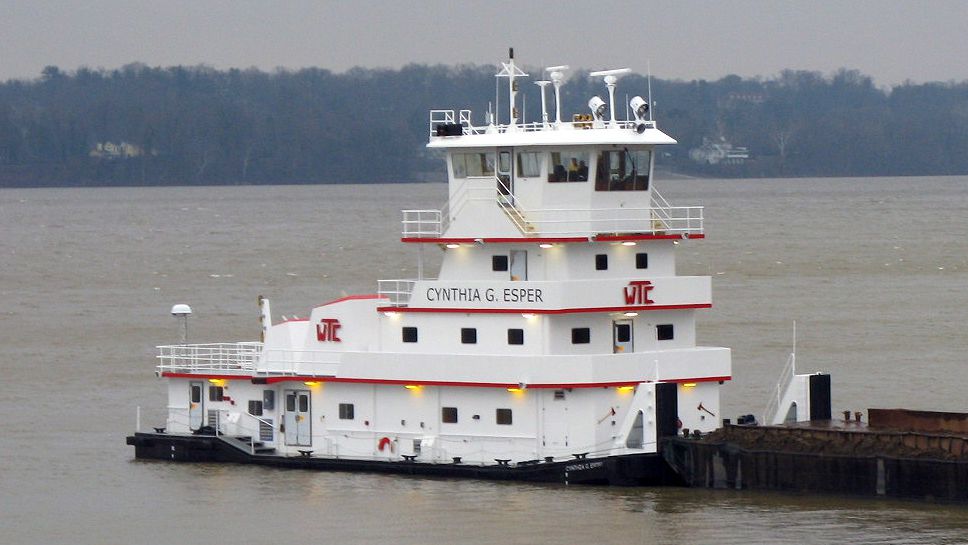Video: Two Mississippi Bridge Allisions as Waters Rise

Authorities with the U.S. Coast Guard Eighth District are investigating two barge allisions on the Mississippi as high water levels hamper shipping and close navigation on some Western Rivers routes.
A towboat pushing several dozen barges struck a railroad bridge in Vicksburg, Mississippi on Tuesday morning, according to the USCG. Nine barges containing coal broke away; two barges sank in the incident, the authorities said in a statement. As of the afternoon of January 12, towboats were working to regaining control of the remaining loose barges, and the USCG had restricted traffic on 12 miles of the river to response vessels only.
The Army Corps of Engineers and a surveyor are examining the sunken barges to determine whether they pose a hazard to navigation. The railroad bridge will remain closed until it is inspected.
A Coast Guard spokesman told media that the USCG had no reports of injuries or pollution related to the incident and that it would be investigating the cause.
The Coast Guard identified the towboat in the Vicksburg incident as the AEP River Operations vessel Ron W. Callegan.
Separately, a towboat pushing chemical barges allided with the Highway 49 bridge over the Mississippi in Helena, Arkansas on Monday night, Coast Guard authorities said, briefly closing a section of the river to traffic. The bridge was also closed for inspection but no damage was found; it was reopened early on Tuesday.
Four barges broke away in the Helena incident, the USCG said, and all were secured by the early hours of Tuesday morning. Two barges containing several million gallons of denatured alcohol were damaged and taking on water, but a USCG spokesman said that no pollution had occurred and the barges would be emptied for safety. No injuries were reported.
The Coast Guard identified the towboat in the Helena incident as the SCF Liquids vessel Cynthia G. Esper.
The USCG also announced that, in conjunction with the Army Corps of Engineers, it has placed an AIS virtual aid to navigation to mark the wreck site of the sunken towboat William Strait until flood waters recede enough to salvage the vessel.
“The multiagency collaboration on e-Navigation and AIS began over 10 years ago, and in 17 years of federal service, it has be one of the most successful partnerships in which I have had the pleasure to work,” said Michael F. Winkler, a research hydraulic engineer with the Corps. “The effort to have a Virtual ATON mark the sunken vessel went from general discussion to successful transmission in just over 48 hours.”
